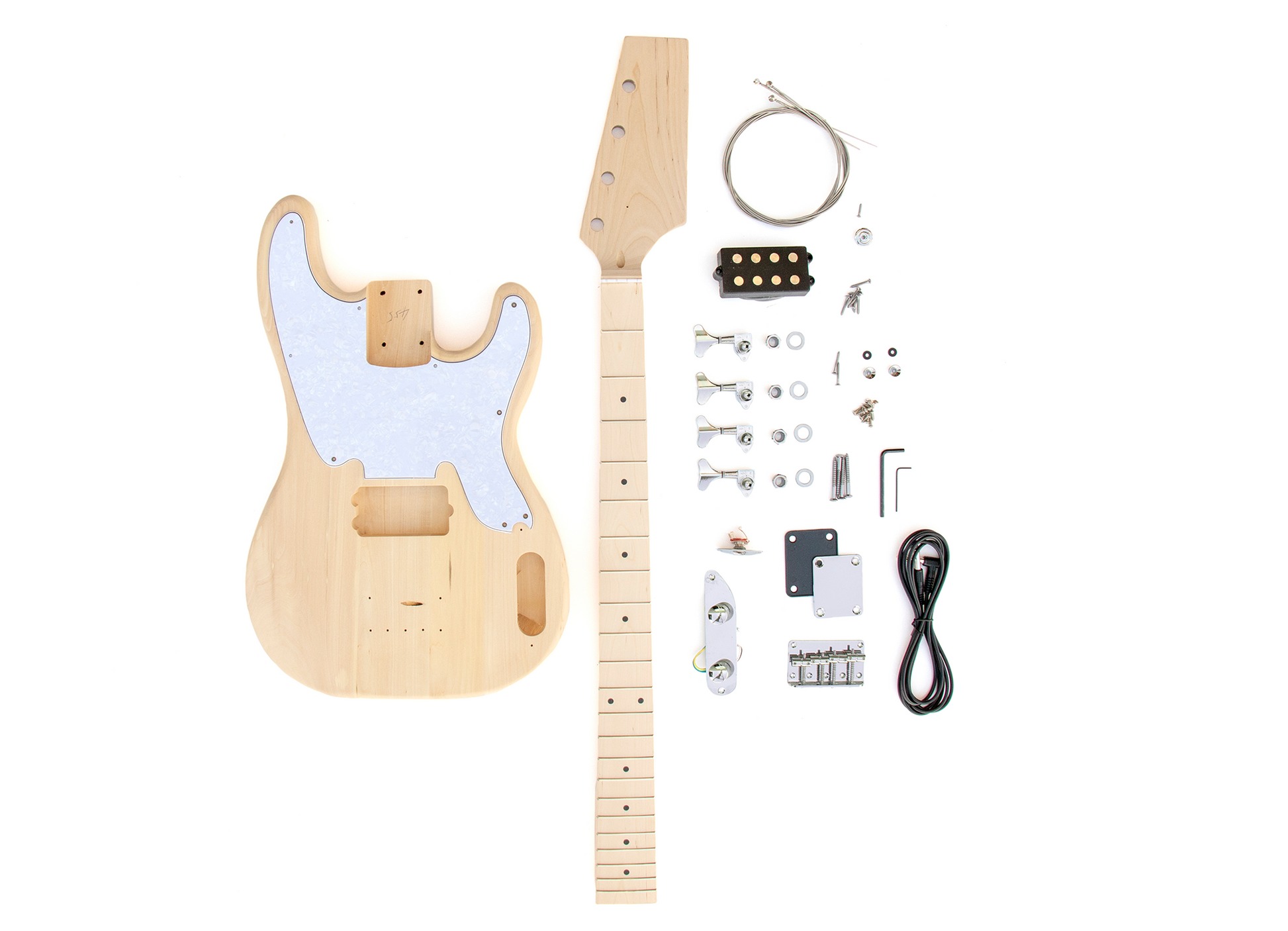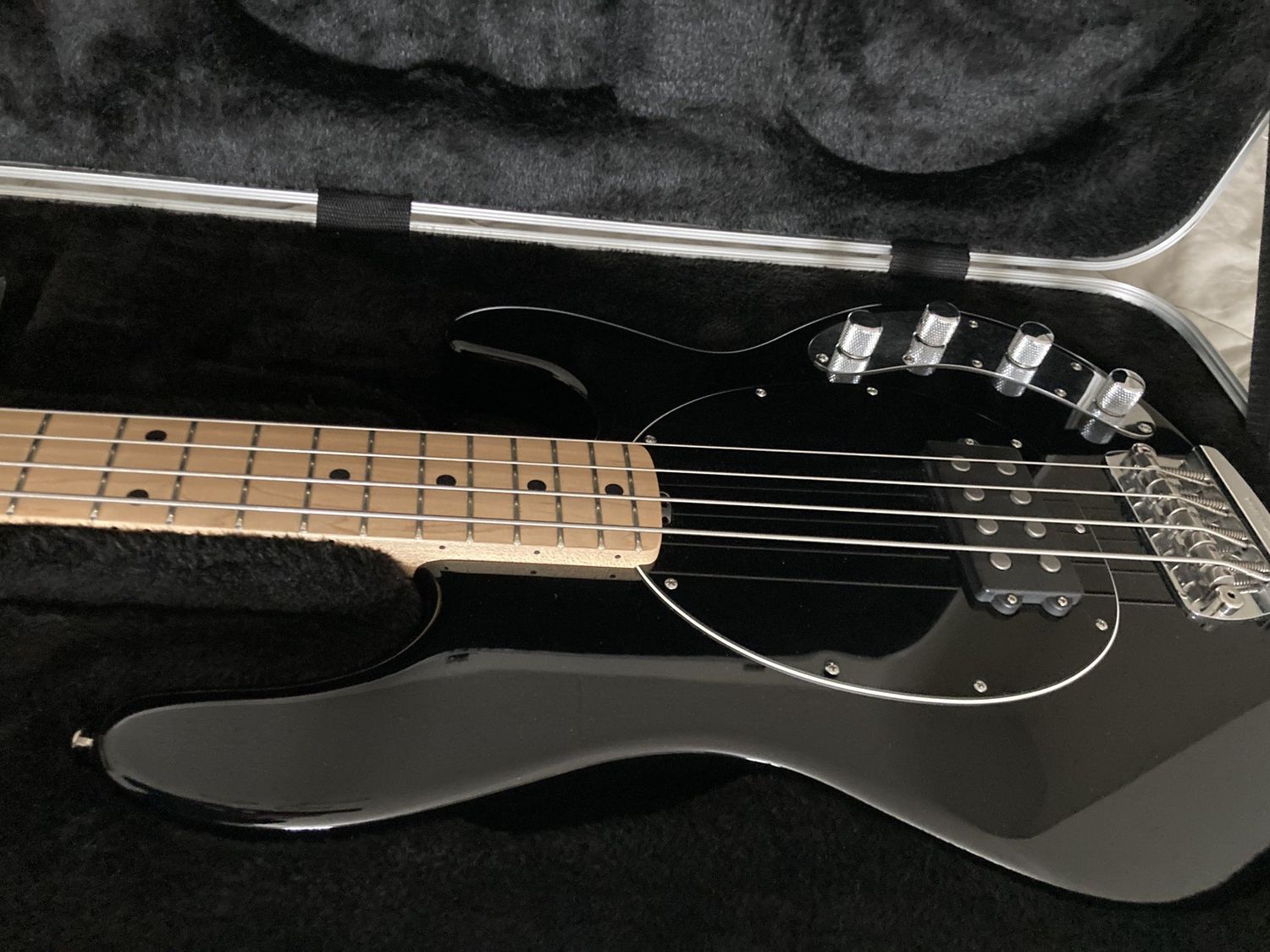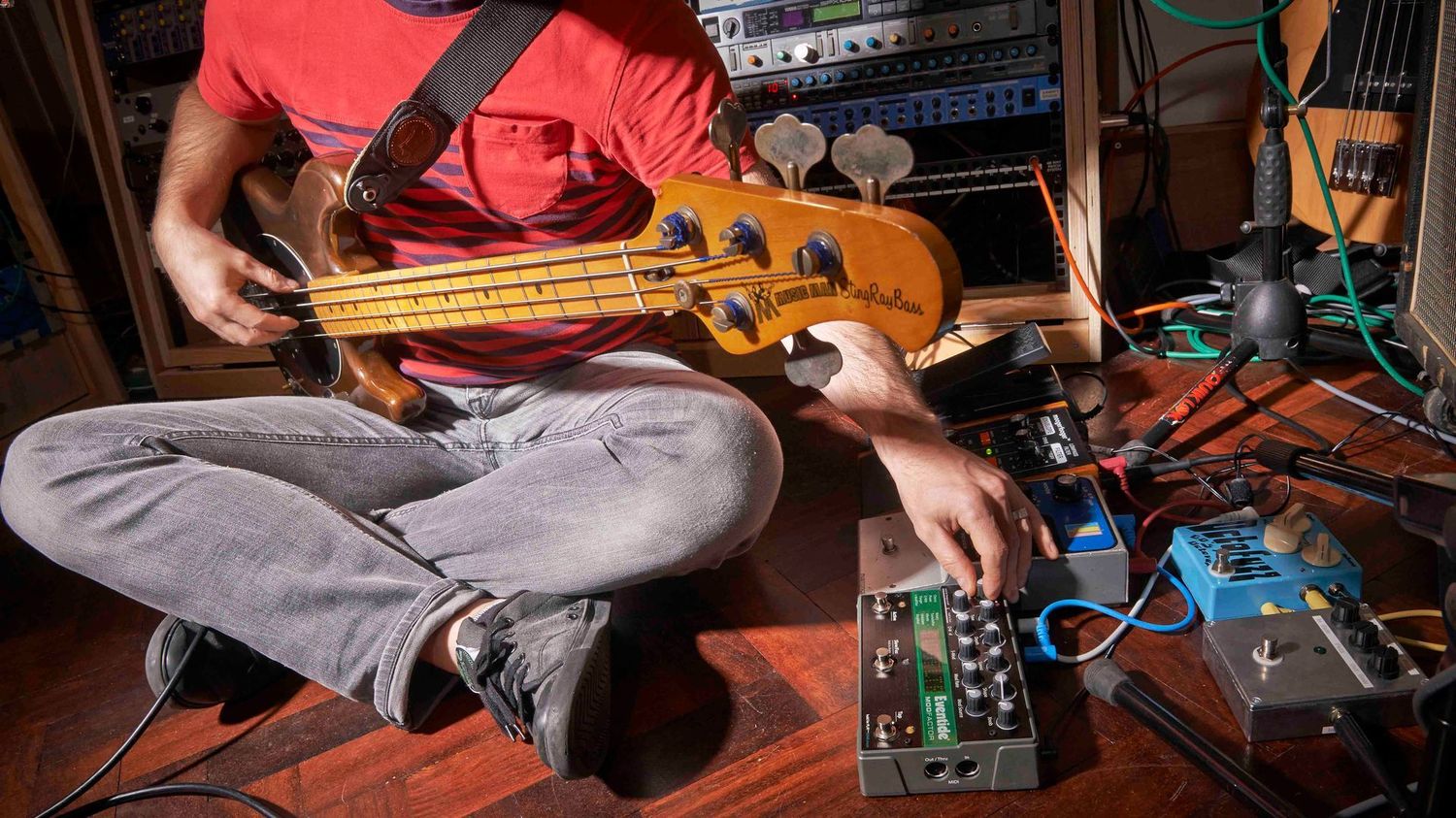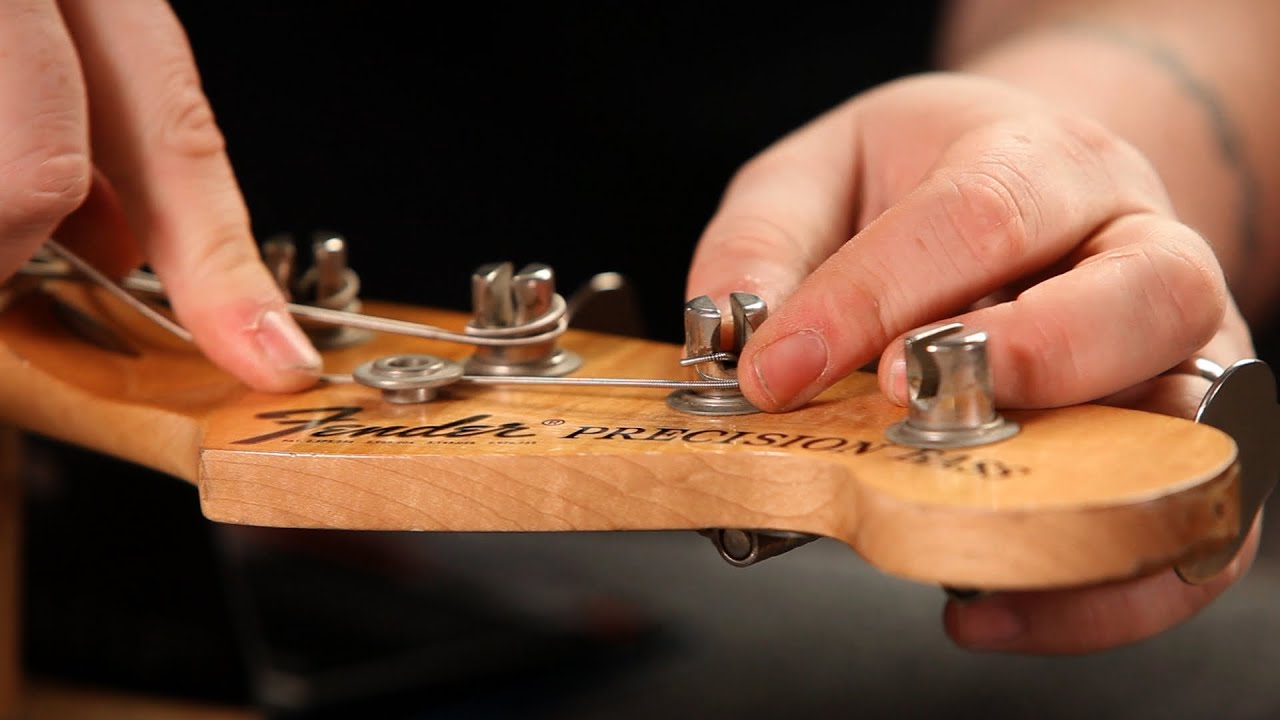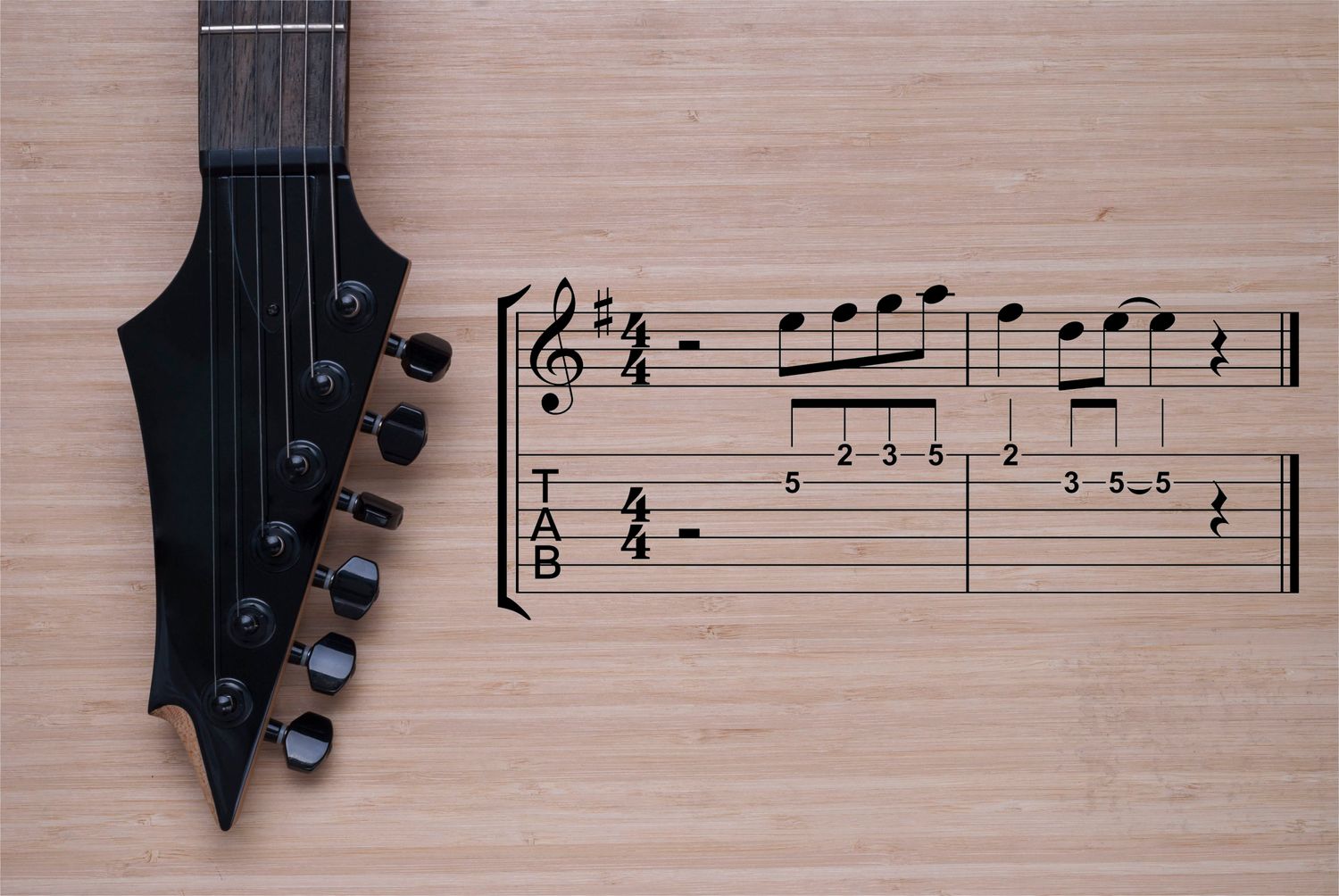Home>Instruments>Guitar>What Is The Bass Guitar
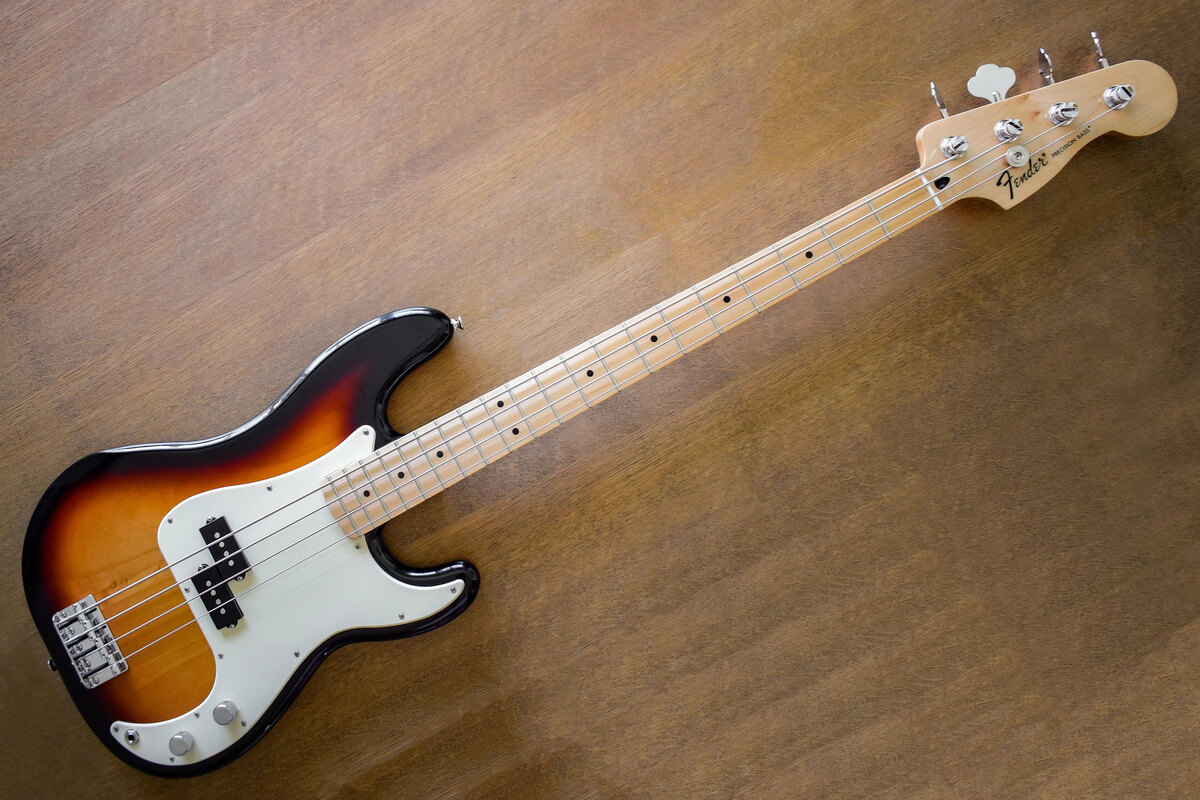

Guitar
What Is The Bass Guitar
Published: February 15, 2024
Discover the role of the bass guitar in music and learn about its unique sound and versatile capabilities. Explore the history and importance of this essential instrument.
(Many of the links in this article redirect to a specific reviewed product. Your purchase of these products through affiliate links helps to generate commission for AudioLover.com, at no extra cost. Learn more)
Table of Contents
Introduction
The bass guitar, often referred to simply as the bass, is a fundamental component of many music genres, including rock, jazz, funk, and more. As a member of the rhythm section, the bass guitar plays a crucial role in providing the harmonic foundation and driving the groove of a song. Its deep, resonant tones add richness and depth to musical compositions, making it an indispensable instrument in bands and ensembles.
The bass guitar is distinct from its counterpart, the electric guitar, not only in terms of its lower pitch range but also in its unique playing techniques and sonic capabilities. While the electric guitar often takes the spotlight with melodic riffs and solos, the bass guitar's primary function is to lay down the rhythmic and harmonic framework of a piece, connecting the rhythm section with the melodic elements of the music.
This article aims to delve into the world of the bass guitar, exploring its history, anatomy, playing techniques, and its significant role in shaping the sound of modern music. Whether you're a seasoned bassist, an aspiring musician, or simply a curious enthusiast, this comprehensive guide will provide valuable insights into the captivating realm of the bass guitar.
History of the Bass Guitar
The history of the bass guitar is a tale of innovation and evolution within the realm of musical instruments. Its origins can be traced back to the early 1930s when musicians and instrument makers sought to create a more practical and portable alternative to the double bass, which was the primary instrument responsible for providing the low-end foundation in ensembles at the time.
One of the earliest iterations of the electric bass guitar was the “Frying Pan” developed by inventor Paul Tutmarc in the 1930s. This pioneering instrument featured a solid body and electromagnetic pickups, laying the groundwork for the future development of the modern electric bass. However, it was not until the 1950s that the iconic Fender Precision Bass, often regarded as the first commercially successful electric bass guitar, was introduced to the world. With its fretted neck and a more ergonomic design, the Precision Bass revolutionized the way bassists approached their instrument, offering enhanced playability and portability.
Throughout the decades that followed, various manufacturers such as Rickenbacker, Music Man, and Ibanez contributed to the ongoing evolution of the bass guitar, introducing new technologies, tonal possibilities, and aesthetic variations. The emergence of the fretless bass, popularized by virtuosos like Jaco Pastorius, further expanded the sonic palette of the instrument, allowing for smoother glissandos and a more vocal-like quality.
Today, the bass guitar continues to thrive as an essential component of contemporary music, with advancements in construction, electronics, and materials continually shaping its sonic capabilities. From the thunderous lines of rock and metal to the intricate grooves of funk and the melodic tapestries of jazz, the bass guitar’s rich history has intertwined with the evolution of diverse musical genres, solidifying its status as an indispensable force in the world of music.
Anatomy of the Bass Guitar
Understanding the anatomy of the bass guitar is essential for both aspiring musicians and enthusiasts seeking to grasp the instrument’s mechanics and sonic capabilities. A typical bass guitar comprises several key components, each playing a vital role in producing its distinctive sound and facilitating comfortable playability.
Body: The body of a bass guitar can come in various shapes and sizes, with common designs including solid body, semi-hollow, and hollow body configurations. The choice of body type can significantly impact the instrument’s resonance, sustain, and overall tonal characteristics.
Neck: The neck of a bass guitar is where the fretboard and tuning pegs are located. Bass guitars commonly feature either a fretted or fretless neck, each offering distinct playing experiences. The length of the neck influences the instrument’s scale length, which in turn affects the tension and feel of the strings.
Headstock: Situated at the end of the neck, the headstock houses the tuning pegs, which are used to adjust the tension of the strings, thereby tuning the instrument to the desired pitches.
Pickups: The pickups on a bass guitar are responsible for capturing the vibrations of the strings and converting them into electrical signals. Different pickup configurations, such as single-coil and humbucking pickups, yield diverse tonal qualities, allowing bassists to sculpt their sound to suit various musical styles.
Bridge: The bridge of a bass guitar anchors the strings and serves as a point of contact for transmitting string vibrations to the instrument’s body. It also facilitates the adjustment of string intonation and height, crucial for achieving accurate pitch and comfortable playability.
Controls: Bass guitars are equipped with control knobs or switches that enable players to manipulate the instrument’s tonal characteristics. Common controls include volume knobs, tone knobs, and pickup selectors, offering a wide range of sonic possibilities.
By familiarizing themselves with the intricate anatomy of the bass guitar, musicians can develop a deeper appreciation for the instrument’s construction and sonic potential, paving the way for creative exploration and musical expression.
Types of Bass Guitars
Bass guitars come in a diverse array of types, each offering unique tonal qualities, playing experiences, and aesthetic appeal. Understanding the distinctions between these variations is essential for musicians seeking to find an instrument that aligns with their musical preferences and playing styles.
Electric Bass Guitar: The electric bass guitar, commonly referred to as the “solid-body” bass, is the most prevalent type in contemporary music. Its solid construction and electromagnetic pickups allow for amplified sound production, making it a staple in genres ranging from rock and funk to metal and beyond.
Acoustic Bass Guitar: Acoustic bass guitars feature hollow bodies and sound holes, akin to acoustic guitars, enabling them to produce sound acoustically without the need for amplification. These instruments are favored for unplugged performances and intimate settings, offering a warm and organic tonal character.
Fretted Bass Guitar: Fretted bass guitars are equipped with metal frets embedded along the fingerboard, delineating specific pitches and facilitating precise intonation. The frets enable clear note articulation and are well-suited for players who prefer defined pitch boundaries.
Fretless Bass Guitar: In contrast, fretless bass guitars lack frets, allowing for smooth glissandos, microtonal nuances, and a more vocal-like expression. Fretless basses are favored in jazz, fusion, and world music genres for their ability to produce fluid, singing tones.
Multi-Scale Bass Guitar: Multi-scale bass guitars feature varying scale lengths for individual strings, optimizing string tension and tonal balance across the instrument’s range. This design enhances playability and string response, particularly beneficial for extended-range bassists.
By exploring the diverse landscape of bass guitar types, musicians can identify instruments that resonate with their artistic sensibilities, ultimately enriching their musical journeys and expanding their sonic horizons.
Playing Techniques
Mastering a range of playing techniques is essential for bassists aiming to express themselves creatively and adapt to diverse musical contexts. From establishing solid foundational grooves to exploring melodic possibilities, the following techniques form the bedrock of bass guitar proficiency:
- Fingerstyle: Utilizing the fingers to pluck the strings, fingerstyle playing allows for nuanced dynamics and articulation. Bassists can employ varied techniques, such as plucking with the index and middle fingers or utilizing the “slap and pop” method, to achieve rhythmic percussiveness and expressive tonal variations.
- Using a Pick: Employing a pick, also known as a plectrum, yields a distinct attack and brightness to the bass guitar’s sound. This technique is favored in rock, punk, and metal genres for its aggressive and assertive tonal character.
- Tapping: Tapping involves using the fingers of the fretting hand to “tap” the strings against the fretboard, producing rapid and intricate note patterns. This technique, popularized by virtuosos like Billy Sheehan and Victor Wooten, unlocks a world of melodic and rhythmic possibilities on the bass guitar.
- Sliding and Vibrato: Employing slides and vibrato techniques adds expressive flair to bass lines, imbuing them with emotive qualities akin to those of vocal performances. By deftly manipulating pitch and sustain, bassists can infuse their playing with soulful nuances and captivating textures.
- Double Stops and Harmonics: Incorporating double stops and harmonics introduces harmonic richness and ethereal overtones to bass lines. Bassists can create captivating textures by simultaneously playing two notes or eliciting harmonics at specific nodal points along the strings.
By honing these techniques and integrating them into their musical vocabulary, bassists can elevate their playing to new heights, enriching compositions and performances with expressive depth and technical prowess.
Role of the Bass Guitar in Music
The bass guitar occupies a pivotal role in shaping the sonic tapestry of musical compositions, serving as the linchpin that bridges the rhythmic and harmonic elements of a piece. Its multifaceted contributions encompass foundational support, melodic embellishments, and rhythmic propulsion, all of which are integral to the cohesion and dynamism of a musical ensemble.
Harmonic Foundation: At its core, the bass guitar lays the harmonic groundwork of a song, underpinning the chord progressions and providing a stable foundation for other instrumentalists and vocalists to build upon. Its deep, resonant tones establish the tonal center and guide the harmonic movement, anchoring the musical arrangement with unwavering solidity.
Rhythmic Drive: Through its collaboration with the drums and percussion, the bass guitar propels the rhythmic momentum of a composition, infusing it with groove and vitality. By locking in with the drummer’s kick and snare patterns, the bass guitar forms the rhythmic nucleus, driving the pulse of the music and compelling listeners to move and engage with the groove.
Melodic and Textural Enrichment: Beyond its foundational duties, the bass guitar often ventures into melodic territories, embellishing compositions with captivating hooks, countermelodies, and improvisational excursions. Its expressive potential extends to the realm of textural embellishments, where techniques like harmonics, slaps, and ghost notes impart depth and character to the sonic landscape.
Dynamic Interplay: In collaborative settings, the bass guitar engages in dynamic interplay with other instruments, forging intricate musical dialogues and complementing the melodic and rhythmic elements. Its synergy with guitars, keyboards, and horns fosters harmonic richness and rhythmic cohesion, elevating the overall musical experience.
As a unifying force that bridges the realms of rhythm and harmony, the bass guitar epitomizes versatility and indispensability in the realm of music, enriching compositions and performances with its resonant presence and multifaceted contributions.
Conclusion
The bass guitar stands as a cornerstone of modern music, wielding immense influence and significance across a myriad of genres and musical landscapes. Its evolution from the early innovations of the 20th century to its present-day ubiquity has been marked by a spirit of creativity, adaptability, and sonic exploration.
Aspiring and seasoned bassists alike continue to push the boundaries of the instrument, expanding its sonic palette and redefining its role within the musical tapestry. From thunderous rock anthems to intricate jazz compositions, the bass guitar’s versatility and expressive potential remain boundless, offering an avenue for artistic innovation and self-expression.
Moreover, the bass guitar’s role as the rhythmic anchor and harmonic fulcrum in ensembles underscores its irreplaceable position within the fabric of music. Its ability to seamlessly meld with diverse instruments, drive compelling grooves, and infuse compositions with melodic richness cements its status as an indispensable force in the realm of musical creation and performance.
Ultimately, the enduring allure of the bass guitar lies in its ability to transcend the confines of traditional roles, evolving into a dynamic and multifaceted instrument that continues to shape the soundscape of contemporary music. As the journey of the bass guitar unfolds, its resonant voice will undoubtedly reverberate through the annals of musical history, leaving an indelible mark on generations of listeners and musicians to come.

